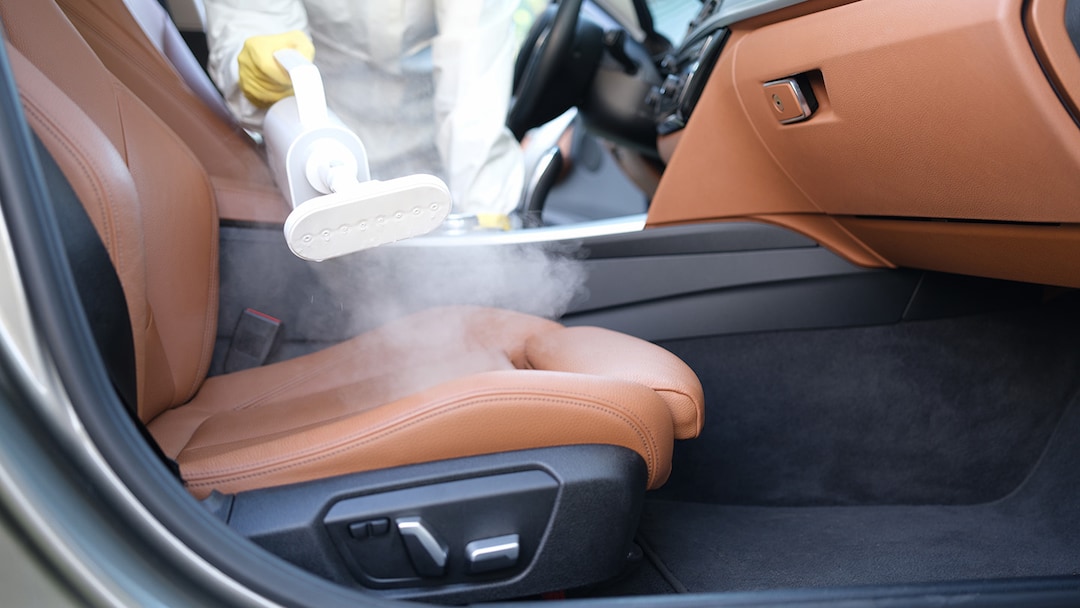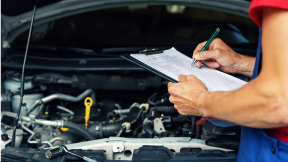How to repair leather seats and keep them looking good

Quick insights
- Damage from the sun and accidents may cause different problems with leather seats in vehicles.
- Leather cleaning products might fix common issues with leather car seats, while conditioning products might prevent issues in the first place.
- Severe stains, discoloration, tears and other physical damage might have a DIY solution or require professional help.
Upholstery contributes to comfort, atmosphere and even a car’s personality. Leather car seats have many enemies, and various issues can happen as your car is used. However, there may be a solution for the particular problem your beloved seats face.
How to clean and repair leather car seats
Natural wear and tear on a car’s interior may be unavoidable. Heat, sunlight and regular use often accelerate many of the problems with leather car seats. And yet, many issues have a remedy.
How to remove stains
There are several ways to clean leather car seats, and most methods avoid using water. While you may find assorted treatments available in the marketplace, sometimes a damp cloth is enough to do the job. Sometimes a little dish soap could do the trick. However, cleaning leather seats depends on the issue.
Your first defense against a leather stain is to clean off whatever it is as soon as you can. Grease, ink, coffee—some car seat stains are pretty self-explanatory; however, more mysterious stains might need specific cleaning solutions. They might even be advertised for specific types of stains. Before using anything on a highly visible spot, test your stain remover on a small, inconspicuous area first.
How to fix discoloration
When leather appears to fade or change colors, it could be a permanent problem. The sun and abrasive cleaners are common causes of discoloration in leather car seats. To restore the color of a leather car seat, browse cleaning products with or without a dye or tint. Follow the manufacturer’s recommendation for applying any restorative dye products, including any aftercare instructions.
Repairing a tear in a leather car seat
Promptly addressing a tear in a leather car seat could prevent further damage. The larger the tear, the more difficult it will typically be to fix. Leather glue could be enough to repair small tears, while sewing, stitching and patching might be necessary for bigger tears.
How to repair a crease
Fixing a crease in a leather car seat can depend on the severity. First, it’s important to clean the area. Then, applying heat can loosen the fold—perhaps with a hairdryer or heat gun. If there’s no setting for use on leather, start with the lowest heat. Warm leather is easier to work with—you might be able to massage the leather and smooth the crease. You could try an iron, too, just use a cloth in between the iron and the seat.
Fixing scratches
Fixing a scratch depends on how severe it is. Common accidental damage from keys, sharp objects or pets can mean disaster for leather car seats. Minor scratches could be buffed over or conditioned with the correct product. However, major scratches could lead to larger tears if not repaired promptly.
Professional leather seat repair: Is it worth it?
We’ve outlined several fixes to common problems, but there are also professionals who can help. Upholsterers who specialize in vehicle seats may be called trimmers, motor trimmers or coach trimmers. These businesses may offer repair or full upholstery services to consumers.
Car seats can be difficult to stitch and patch regardless of your skill level. When in doubt, consult a professional repair or detailing service.
How to take care of leather car seats
Here are some tips for how to prevent leather seat damage:
- Clean often: Regular cleaning with a damp cloth or a gentle leather cleaner can remove dirt and debris that might damage seats if left to sit. You could avoid stains by soaking them up or cleaning them immediately. Avoid harsh chemicals not meant for leather, too.
- Protection from the sun: The sun can fade and wear on leather seats, particularly dark colors. Using sunshades or parking in shaded areas can minimize the impact of UV exposure. Plus, some conditioning products are designed to protect seats against the sun.
- Seat covers: Arguably the best long-term defense against normal wear and other damaging conditions or activities is a seat cover. It can preserve the leather regardless of how frequently a vehicle is used or exposed to sun by reducing direct contact.
- Buy a leather repair kit: These often have tools, fillers, colorants and other products to fix common problems in leather. Whether it’s a crease, tear or stain, a leather repair kit might even save you a trip to a professional.
Why interior car maintenance is important
Cleanliness and longevity of a car’s interior have different importance to everyone. However, well-maintained vehicle interiors can impact the resale value of a car. Visible damage could dissuade buyers from choosing a used car to buy. Seat damage is often hard to hide, even in pictures, which certain online marketplaces might require.
You could extend the life and appearance of leather car seats by understanding how natural wear happens and taking proactive steps to maintain the upholstery. Whether or not you have leather interior, an annual detail or similar conditioning service can maintain your car’s resale value. This is particularly true if the leather seats in your car begin to age very obviously. You might find a little conditioning goes a long way when exploring a trade-in or resale.
In conclusion
For leather car seats, conditioning agents are useful preservatives, while special leather cleaners can help avoid permanent stains and discoloration. Some physical damage like tears and creases could be fixed yourself. But consider professional repair or conditioning services, as well as seat covers, if you want leather car seats to last as long as possible. Who knows—it might really make a difference if you decide to sell your car down the line.



